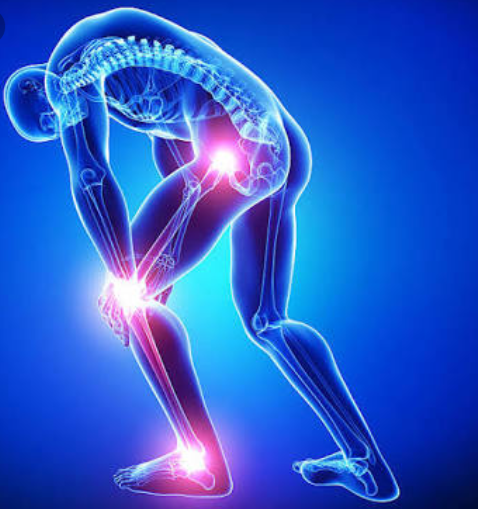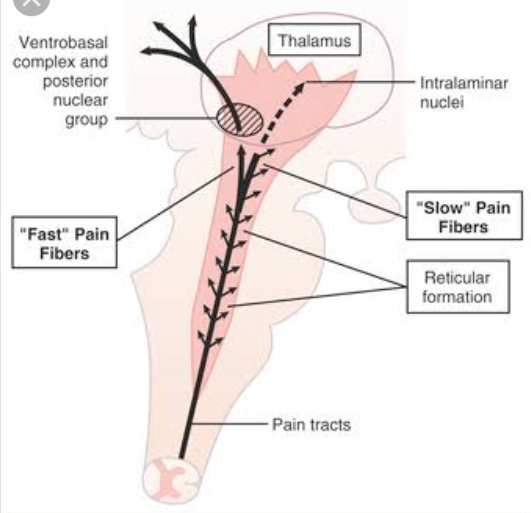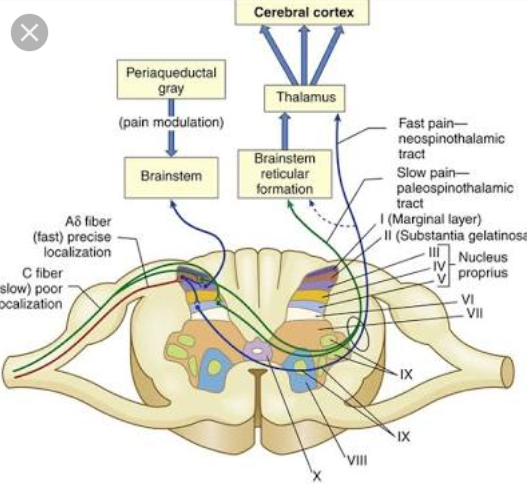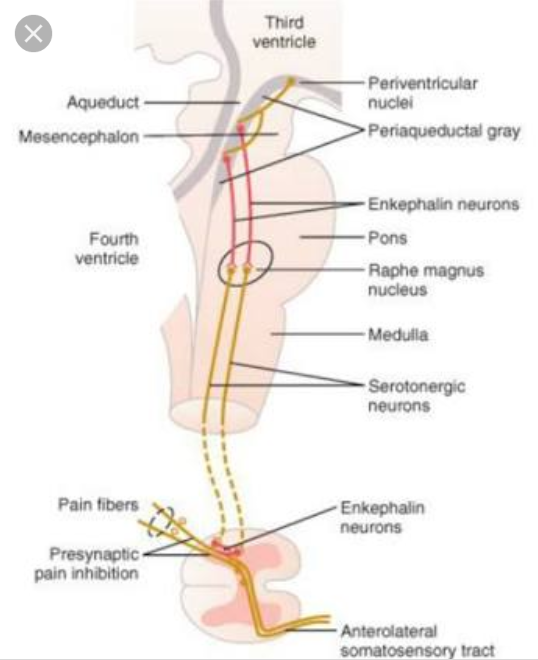PAIN
I glanced at my wall and I realised that I included "a physiologist" as one of my titles.. I haven't been living up to that standard according to my posts. So today I'll be writing about something physiological. Lol. I hope you learn from it.
PAIN

Image source
Pain is my topic of discussion for today.
We all feel pain at one point or the other. I don't think anyone likes the feeling, but funny enough, pain is mainly a protective mechanism for the body. It is a response to tissue injury that is created within the nervous system.
Physiologically, pain is classified into Fast and Slow pain. Fast pain is felt within about 0.1 second after stimulus is felt, whereas slow pain begins 1 second or more following painful stimulus. Usually, slow pain is associated with tissue damage and is synonymous with burning, aching or chronic pain. Pain receptors are found in large numbers in the skin, arterial walls, joint surfaces, periosteum.

Image source
Pain receptors are activated by three types of stimulus.
(1) Mechanical stimuli e.g being flogged
(2) Thermal stimuli e.g touching a hot plate
(3) Chemical stimuli e.g inflammation
¤ Mechanical and thermal stimuli tend to elicit fast pain.
¤ Chemical stimuli on the other end tend to elicit slow pain. Tissue concentration of some substances such as bradykinin, serotonin, histamine, potassium ions e.t.c. are directly related to the degree of painful sensation.
PATHWAYS OF PAIN TRANSMISSION
There are two main pathways for pain transmission;
(1) NEOSPINOTHALAMIC TRACT
(2) PALEOSPINOTHALAMIC TRACT

Image source
NEOSPINOTHALAMIC TRACT
Fast pain signals that are elicited by mechanical or thermal stimuli are usually transmitted through Ađ fibers at velocities between 6 and 30 m/sec. This pathway is used during pain localization. It comprises of neurons that receive Ađ fiber input (Fast pain).
PALEOSPINOTHALAMIC TRACT
Slow, chronic type of pain signals are transmitted over type C fibers at velocities ranging from 0.5 to 2.0 m/sec. This tract is formed from neurons that receive type C fiber. The paleospinothalamic tract is phylogenetically the older of the two pathways.
INTERNAL PAIN SUPPRESSION SYSTEM
Everyone reacts to pain differently. This is due to the existence of a mechanism for pain suppression (analgelsia) that's present in the central nervous system. The analgesia system consists of three major components.
¤ The periaqueductal gray of the mesencephalon and rostral pond which receives input from the ascending pain pathways.
¤ The nucleus range magnus (serotonin) and nucleus paragigantocellularis (norepinephrine) in the medulla which receives input from the periaqueductal gray and project to neurons in the dorsal horn of the spinal cord.
¤ Input from the descending serotonergic raphe Magnus axons are received by enkephalin interneurons. This enkephalin interneurons forms direct synaptic contact with incoming pain fibers. This phenomenon is called primary efferent depolarization, and its effect is to interrupt the transmission of pain signals over the incoming primary sensory fibers.

Image source
I'll stop at this junction today. I really do hope you learnt from and enjoyed this post. Thanks for stopping by.
Very informative. It beats me why some people prefer to fell pain, to be flogged, to burn or cut themselves. A lot of technical terms that had me running to a search engine. Great stuff. I've learnt something new today
Thanks alot for taking your time to comment.
Congratulations! Your post has been upvoted by Reach Out, which is proudly sponsored by @eturnerx. Our goal is to support Nigerian minnows on Steemit. Join our discord group https://discord.gg/NWAkKfn
This post has received a 0.05 % upvote from @drotto thanks to: @banjo.
You got a 3.92% upvote from @upmewhale courtesy of @ceemo! Earn 90% daily earning payout by delegating SP to @upmewhale.
Nice post,thanks for sharing.
You welcome dear, you're always welcome.
This is very true thanks for the post it's really informative
Thanks for stopping by.
Wow. This is really informative, great research you have done here! Well done!
You welcome .
You got a 11.58% upvote from @minnowvotes courtesy of @ceemo!
Thank you @ceemo! very informative. Physical pain is well ... painful. You can try to ignore it and bury is deeper into the tissue, you can make it a part of your story (a part of your character), you can even use it to get attention and care you crave. Or you can acknowledge it and "befriend" it, see what this pain is a reaction to, see what the body is trying to communicate to you though the pain (instead of pushing it away as an enemy). But apart from physical pain, emotional pain is even more common. In many cases emotional pain in self-inflicted. By holding on to what we did wrong, what others did wrong and so on we are prolonging emotional pain, sometimes for years or even a lifetime. A little bit of self-compasion goes a long way!